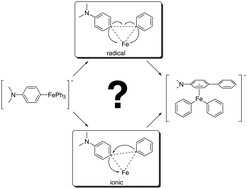An ab initio multireference study of reductive eliminations from organoferrates(iii) in the gas-phase: it is all about the spin state†
Abstract
Organoferrates(III) of the composition [FeR3R′]− have previously been identified in multiple studies as reaction intermediates during Fe-mediated cross coupling reactions. They are readily formed under reaction conditions and are able to efficiently eliminate cross coupling products which is a key step of the total reaction. However, only little is known about the electronic and structural properties of these organoferrates(III) and the mechanistic details of the reductive elimination. In this work modern ab initio electronic structure methods on the basis of the density matrix renormalization group (DMRG) are used to study the properties and reactivity of a set of eight organoferrates(III) with composition [Ph3FeR]− that have been investigated previously by mass-spectrometry experiments. The presented results provide a detailed picture about the reaction mechanism that explains the experimentally observed chemoselectivity in the gas-phase for the majority of cases. An interesting aspect of the proposed mechanism is the central role of the total spin which changes in the course of the reaction and governs the type of reaction mechanism. Eventually the applied computational procedures are thoroughly discussed in view of the conceptual and technical difficulties that were faced during the conducted studies.

- This article is part of the themed collection: Quantum Theory: The Challenge of Transition Metal Complexes


 Please wait while we load your content...
Please wait while we load your content...